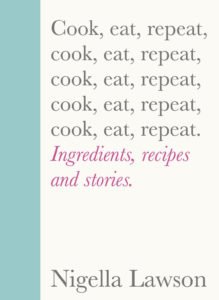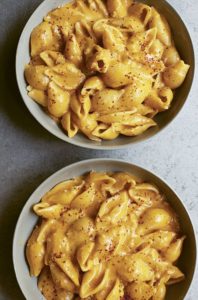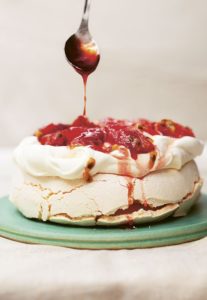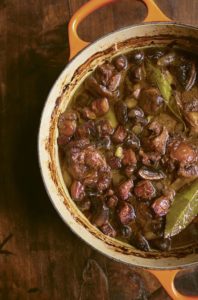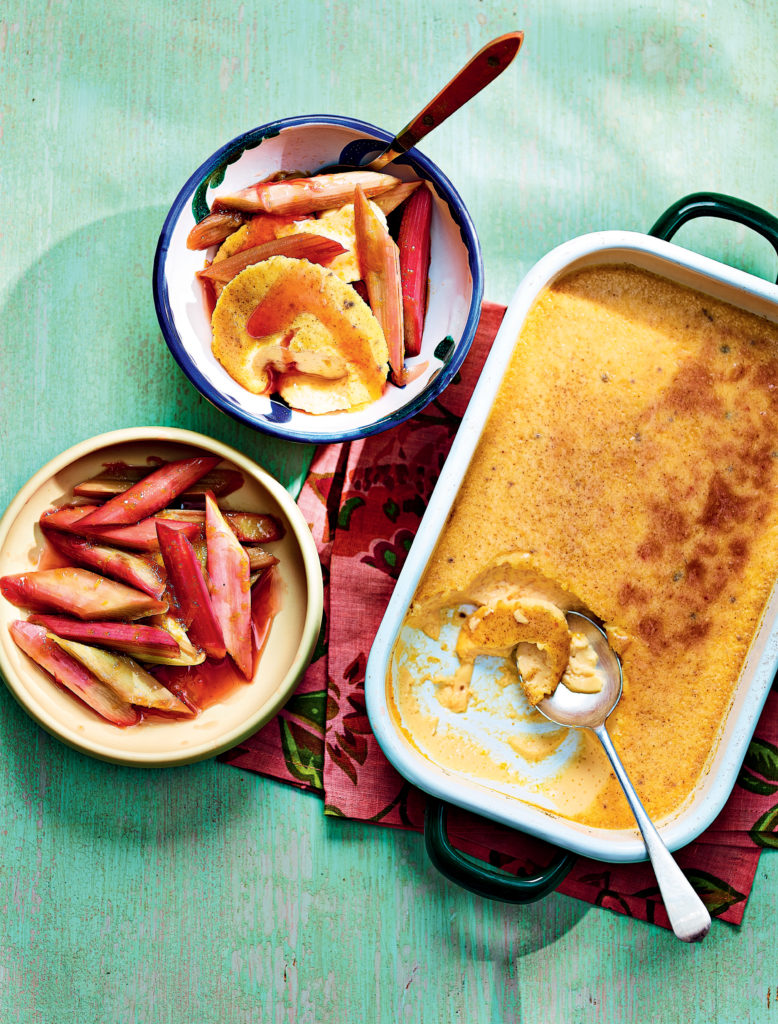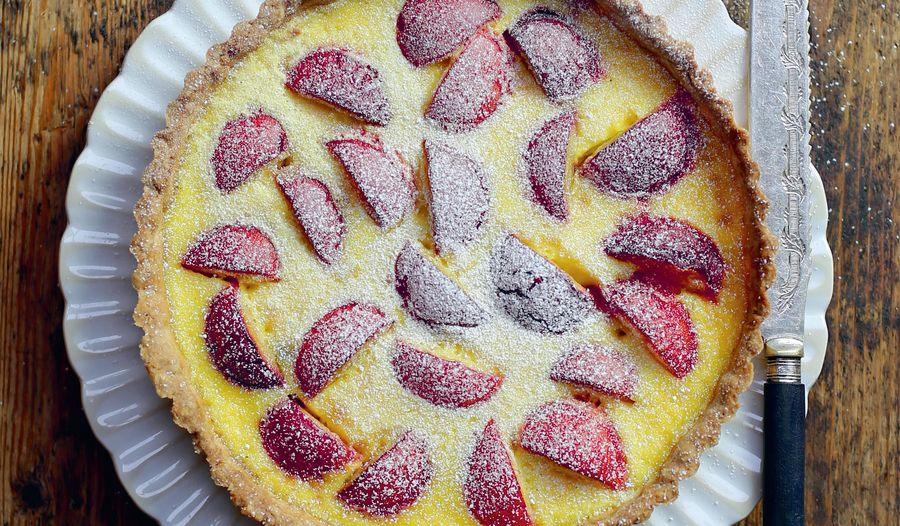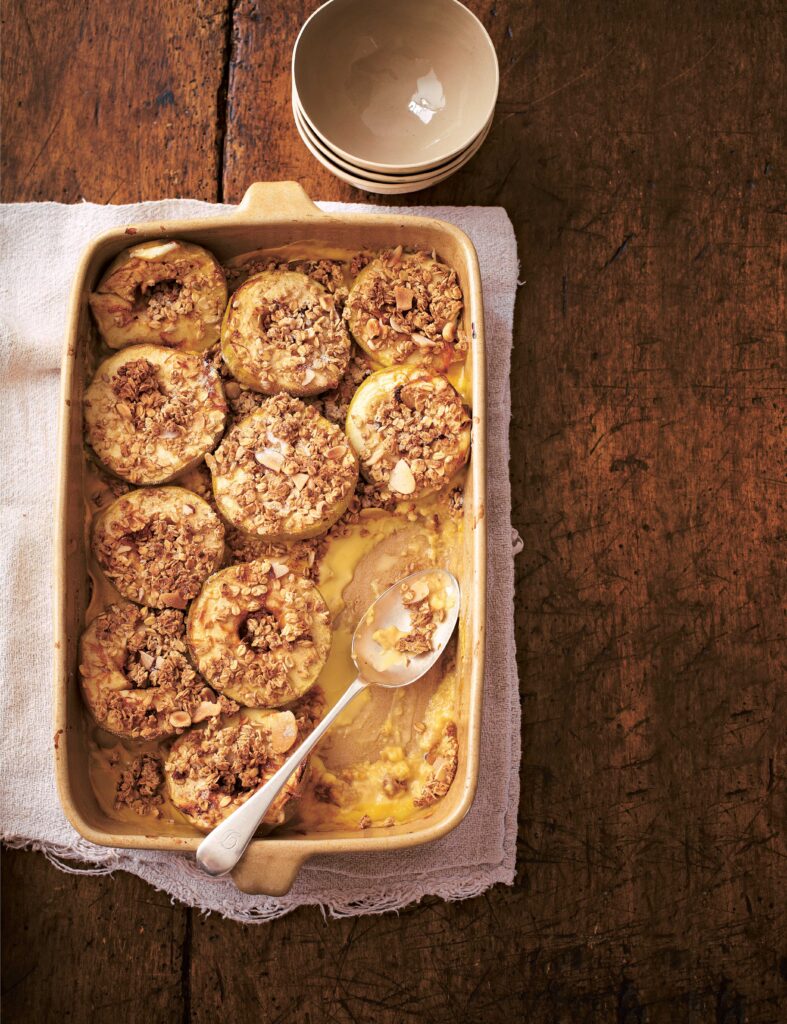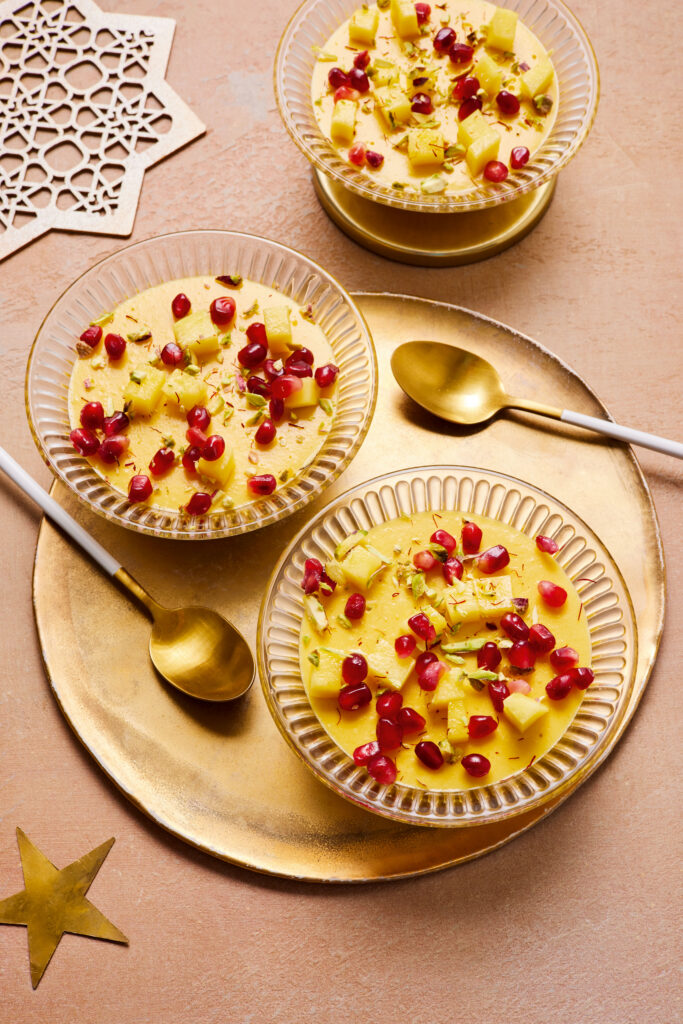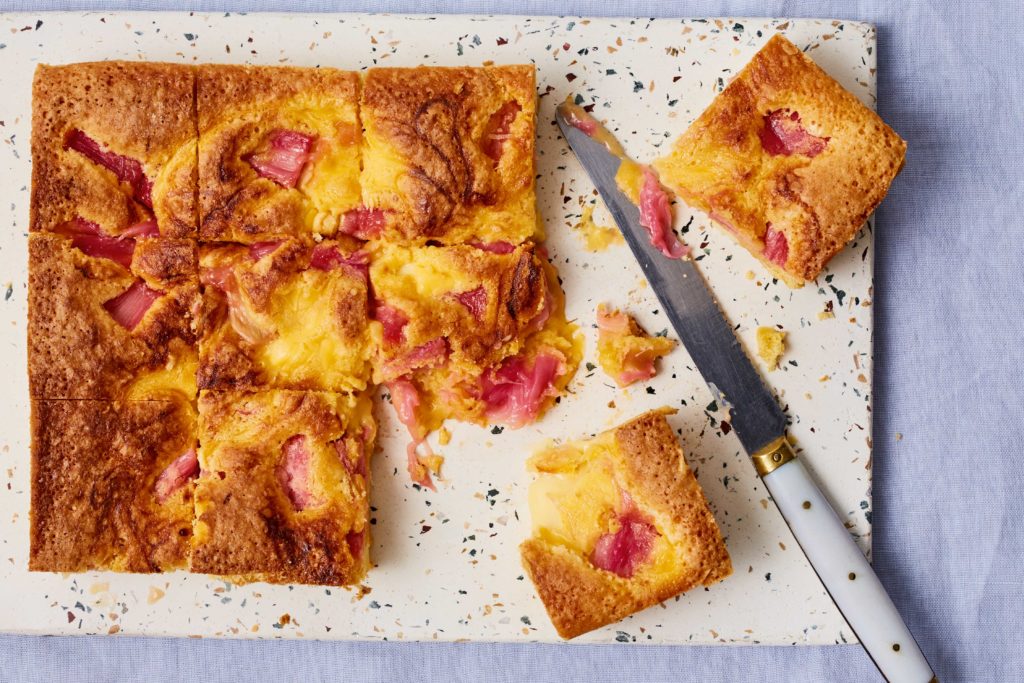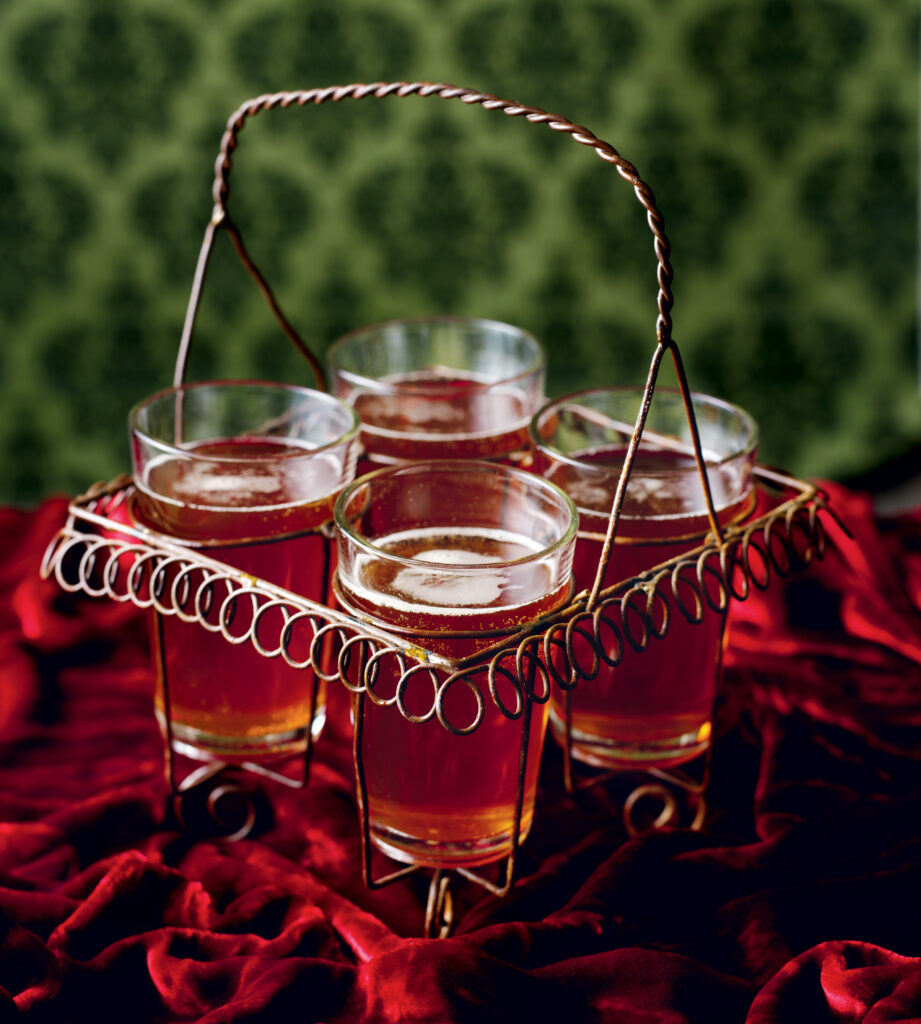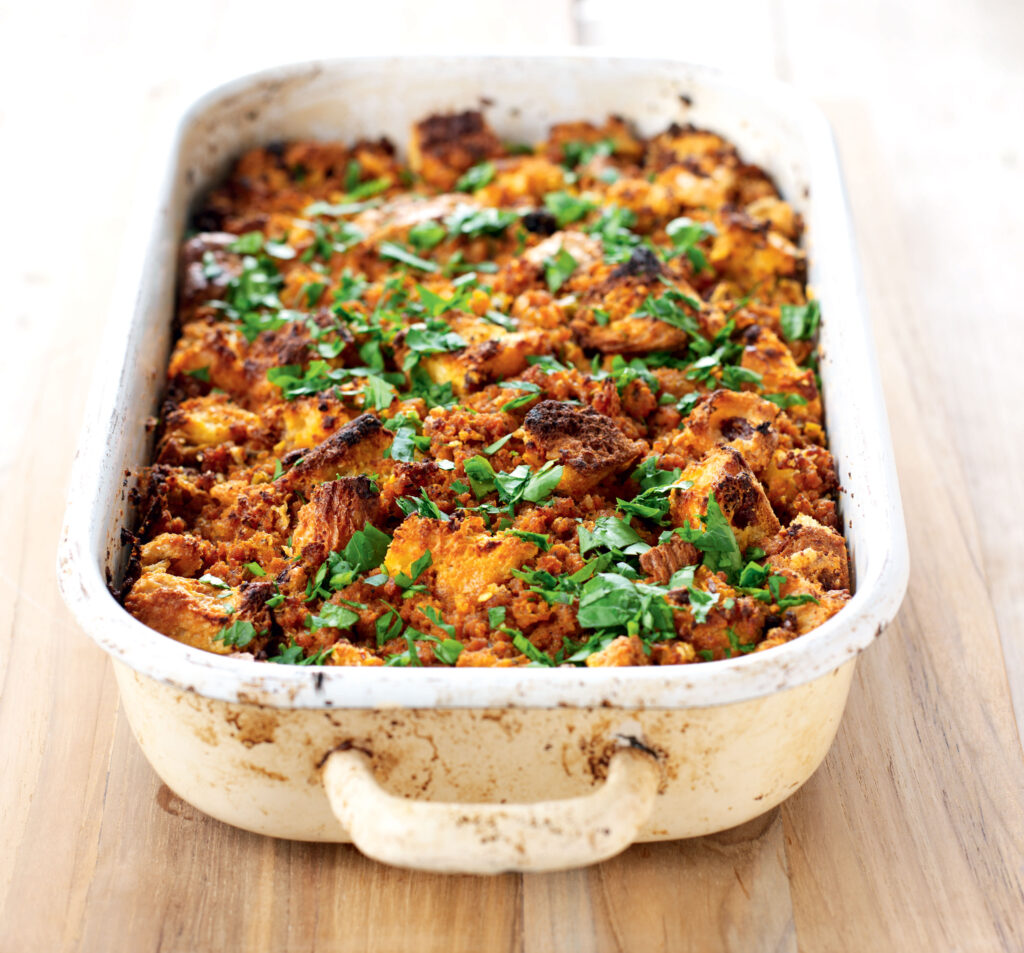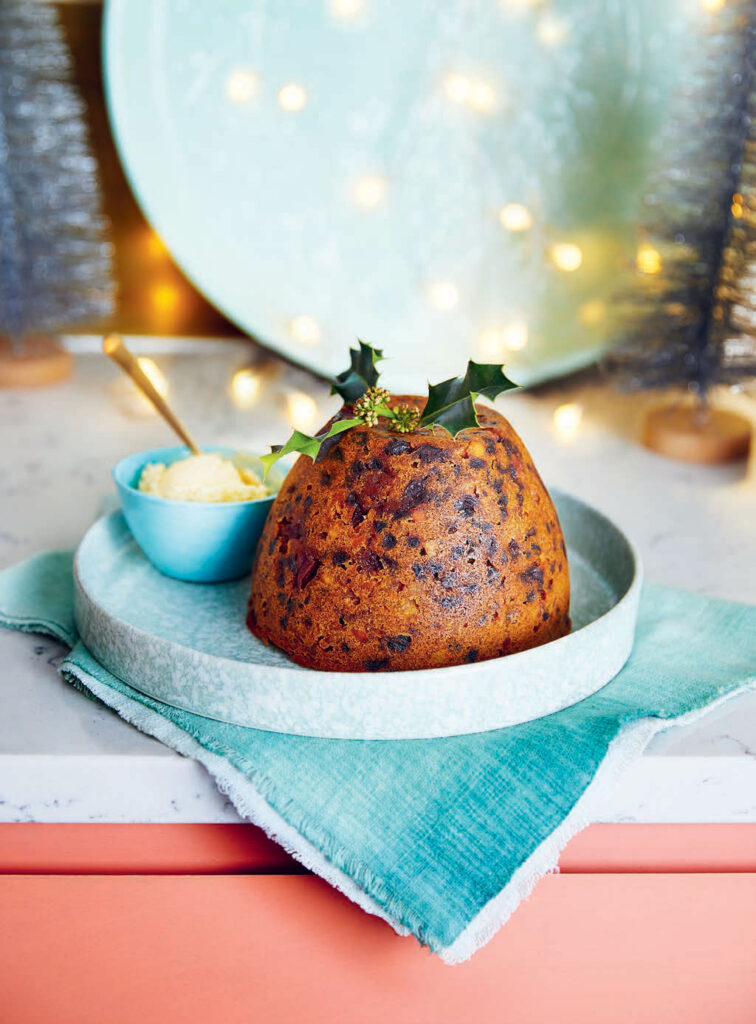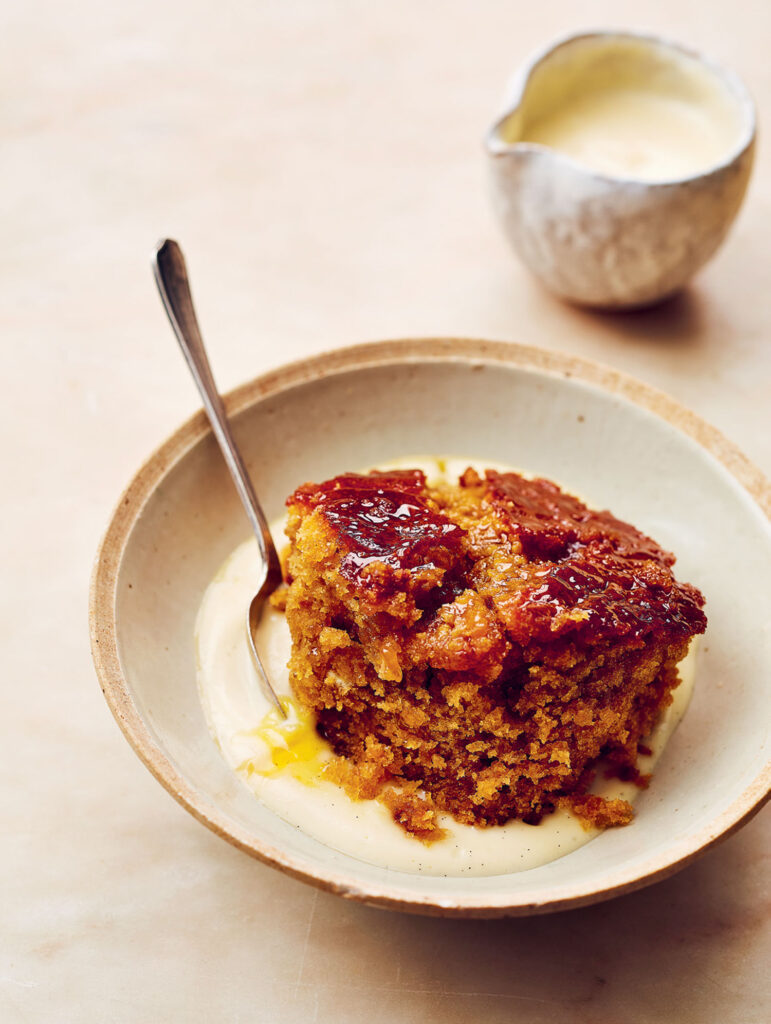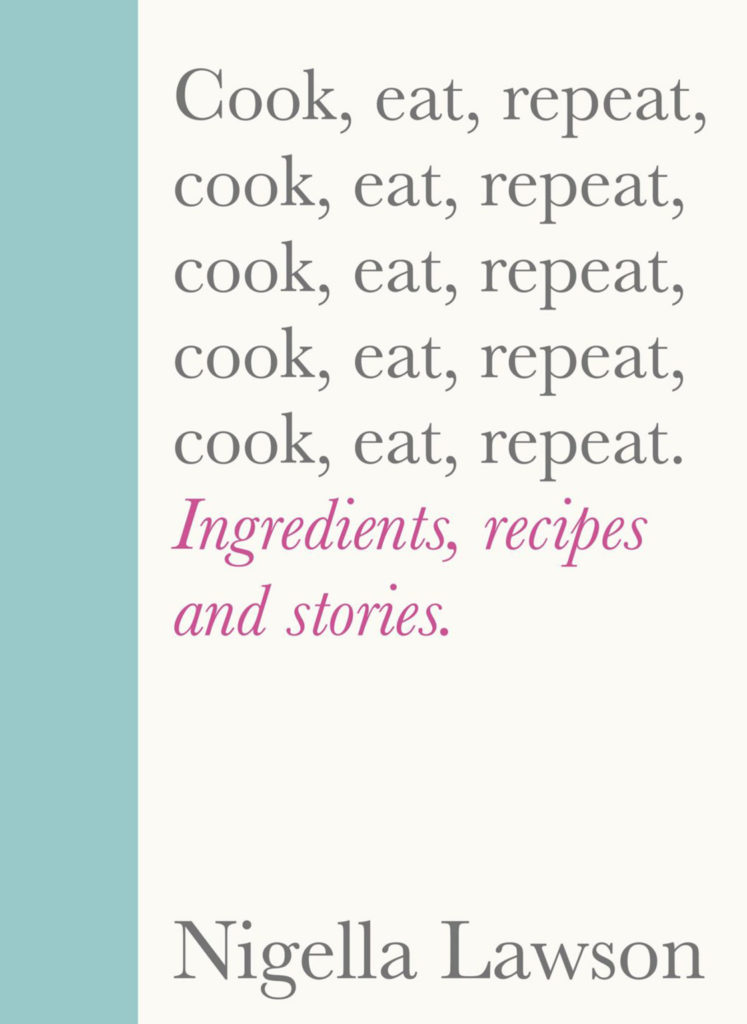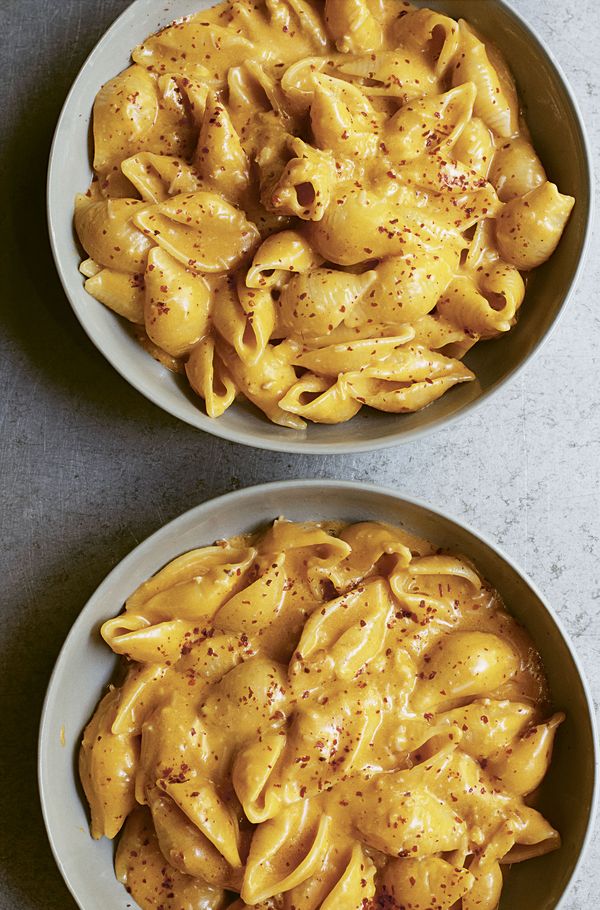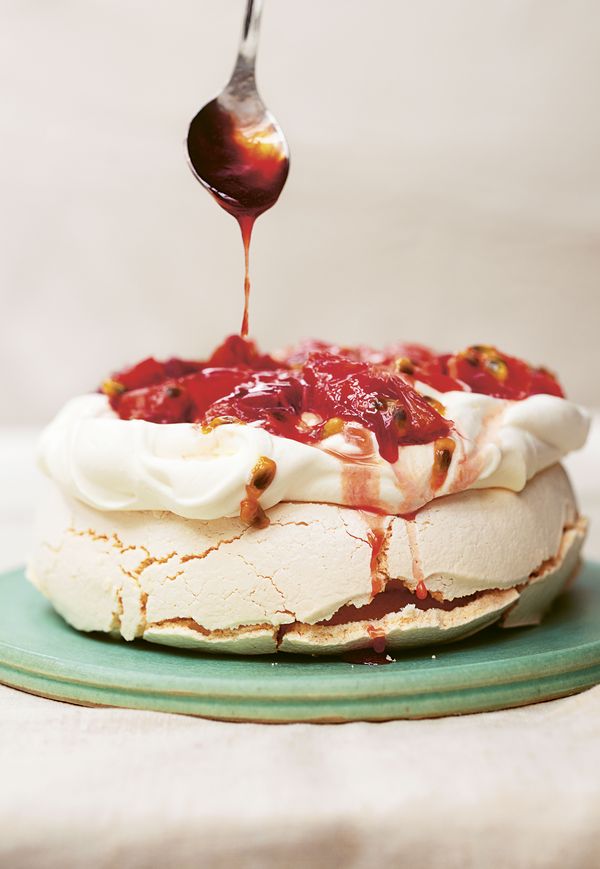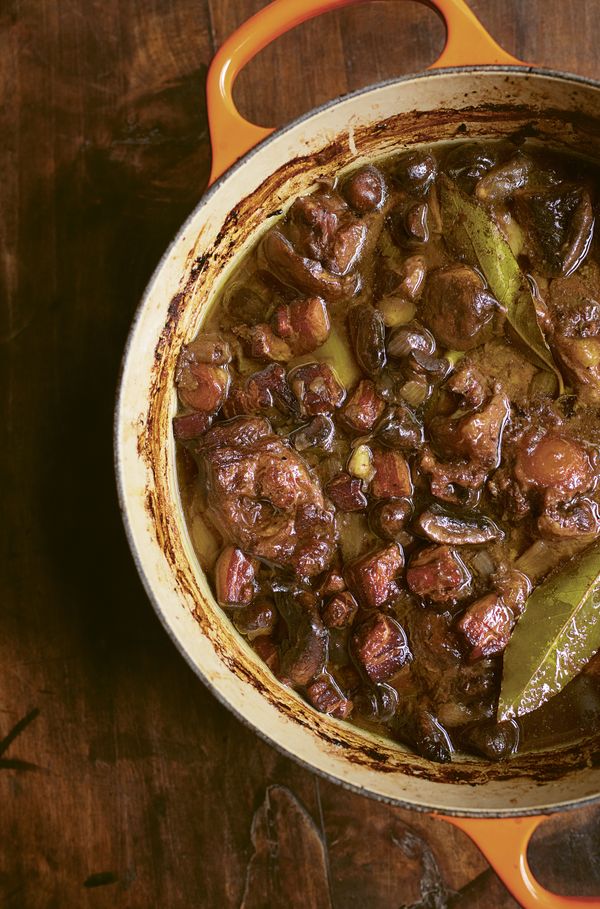Nigella Lawson’s Rhubarb and Custard Trifle
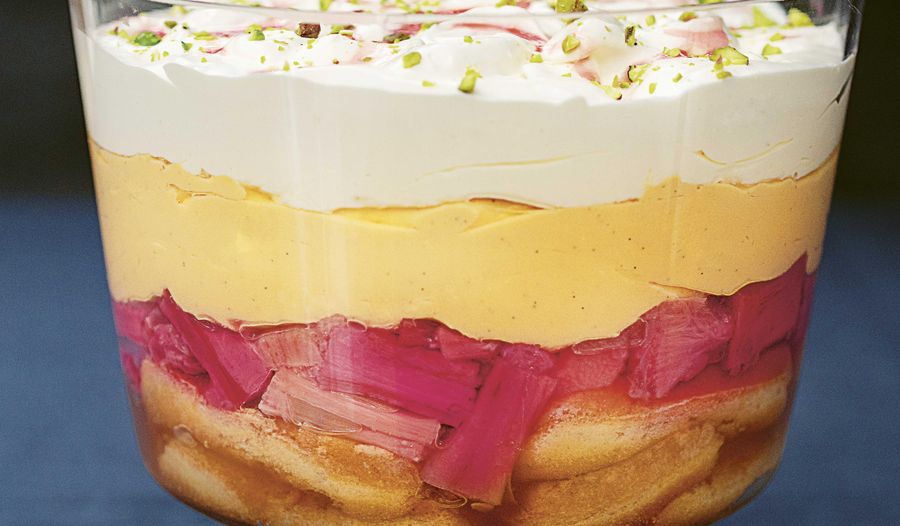
Bright pink forced rhubarb forms the base of this voluptuous trifle from Nigella Lawson's Cook, Eat, Repeat. With homemade custard and lashings of whipped cream, it's a truly indulgent winter dessert.
From the book
Buy From
Introduction
I have published many recipes for trifle and made even more, and this is the one I return to most, even though it is the first time I have actually written it down. This simple, joyous pile-up of sponge, rhubarb, custard and cream remains my favourite, and will always remain my favourite; it’s time I shared it with you.
Rhubarb and custard is a hallowed combination, and one I’m loath to depart from, but I don’t make this once the beautiful, pink forced rhubarb is out of season, preferring to use other fruit rather than the infinitely less beguiling and more fibrous, greener summer rhubarb. In the dead of winter, frozen fruit is your best bet. I tend to go for raspberries, which bring that desirable sharpness, though mixed berries would do on that score too. So, put 800g of frozen raspberries in saucepan, along with 3 tablespoons (40g) of caster sugar and 4 tablespoons of orange juice and give a good stir, before putting over lowish heat with the lid on for about 5 minutes. Stir again, adding 2 teaspoons of vanilla paste (or extract), then leave off the heat for 15 minutes with the lid on. They won’t be completely thawed, but nearly, and will be a deep, almost divinely illuminated red. Once they’ve stood for a quarter of an hour, stir in the 175ml of red vermouth then pour fruit and juice over the sponge in your trifle dish; it will continue to drip down onto the sponge. To replace the rhubarb syrup for drizzling on top later, simply warm together, in a small pan, a tablespoon of seedless raspberry jam, . teaspoon of lemon juice and 2 tablespoons of water, whisking to help the jam melt. Once it comes to a bubble, pour into a little jug and allow to cool completely.
I’ve given precise quantities for all the ingredients below, but please bear in mind these are based on the proportions of my trifle bowl, which is 20cm in diameter and 13cm deep. If you are using a wider bowl you will need to boost quantities or the layers will be too shallow.
Ingredients
| For the custard: | |
| 600ml | double cream |
| 1 | vanilla pod or 2½ tsp vanilla paste (or extract) |
| 6 | large egg yolks, at room temperature |
| 2 x 15ml tbsp plus 2 tsp | caster sugar |
| 1 x 15ml tbsp plus 1 tsp | cornflour |
| For the base: | |
| 1kg | pink forced rhubarb (trimmed weight) |
| 250g | caster sugar |
| 175ml | red vermouth |
| 12 | trifle sponges |
| For the topping: | |
| 300ml | double cream |
| Approx. 3 x 15ml tbsp (20g) | chopped or nibbed pistachios |
Essential kit
You will need: a trifle bowl, approx. 20cm in diameter and 13cm deep.
Method
1. Get on with the custard first. Pour the 600ml of double cream into a heavy-based saucepan (I use one of 22cm diameter), split the vanilla pod lengthways (if using), and use a pointy coffee spoon or the tip of a knife to scrape the damp black seeds into the cream. Drop in the pod, as well. Bring to a bubble but don’t let it boil, then take it off the heat straightaway and cover with a lid to let it infuse for 20 minutes. Remove the vanilla pod, run it under the water from the tap to get any cream off, then leave it to dry and use it to scent sugar. If you’re not using a vanilla pod, just warm the cream and add vanilla paste or extract once your custard is made.
2. Gently whisk the egg yolks, caster sugar and cornflour in a batter jug or whatever suits you. Keep whisking while you gradually pour in the warm cream and make sure it is all smoothly amalgamated. Wash out the saucepan and dry it – just use water, you don’t need soap. Pour the custard mixture from your jug into the pan (using a bendy spatula to scrape out every last eggy bit from the bottom) and cook over medium heat for a minute, stirring with a wooden spoon (preferably one with a pointy bit to help scrape up bits from the bottom), and then on low heat, still stirring mostly with a wooden spoon, but transferring to a little whisk every now and again, too, until thick enough that it coats the back of a wooden spoon and, when you run your finger through it, it doesn’t run into the bare stripe. I reckon this takes about 5 minutes altogether. Mind you, I do like to live dangerously. Go more slowly if you wish, and, at whatever speed you’re going, take the pan off the heat regularly, and whisk the custard, to make sure it doesn’t get too hot, especially around the edges of the base of the pan.
3. As soon as it’s cooked, take it off the heat and scrape it into your batter jug (adding vanilla paste or extract if you haven’t gone the vanilla pod route), then cover with a damp scrunched-up piece of baking parchment to stop it forming a skin. (Even writing ‘skin’ in conjunction with custard makes me feel quite ill.) Once the custard has cooled down, put it into the fridge to chill.
4. Meanwhile, get on with the rhubarb. Heat the oven to 200ºC/180ºC Fan. Cut the trimmed rhubarb into about 5cm lengths if the ribs are slender; if chunky, cut into about 2½cm pieces. Put into an ovenproof dish in which they can (mostly) sit in a single layer – I use a large baking tin measuring 37 x 34cm, though you could get away with one a bit smaller – and sprinkle over the 250g of caster sugar. Mix together well with your hands, leaving the rhubarb in a single layer, as much as possible, then cover the tin or dish with extra-wide foil, sealing the edges, and cook in the oven for approx. 30 minutes until the rhubarb is tender but still holding its shape.
5. Once the rhubarb is just cooked, let it stand out of the oven with the foil removed for 20 minutes. You might be disappointed with the colour the moment it comes out of the oven, by the way, but after a few minutes it will begin to glow a bright candy pink. Gently transfer with a slotted spoon or spatula (or both) to another dish for now. You should have about 300ml of liquid in the tin, although if you wait about 5 minutes, you will see more juice collecting under the rhubarb in its dish; add that to the juice in the tin.
6. Set aside 125ml of the rhubarb juices for now and measure out another 175ml of the rhubarb juice (I should say that by the end of the forced rhubarb season it seems to make less liquid; if you don’t have enough, I suggest you make up the amount with orange juice), then add to it the red vermouth. Taste one teaspoon just for the joy of it, although once you do so, it will be hard not to drink the rest.
7. Now make the rhubarb syrup for the top of the trifle. Pour the re-served 125ml of rhubarb juice into a small heavy-based saucepan, bring to the boil and bubble away to reduce to a viscous syrup. I reckon if I start off with 125ml, it takes about 4 minutes to bubble away (in a small, 14cm diameter saucepan) to 60ml. If you start off with more, still aim to reduce it by half; any further than that and it will turn to rhubarb toffee. And if that does happen, just stir in a little hot water from the kettle to get it to a thick pouring consistency.
8. Arrange your trifle sponges at the bottom of your trifle bowl, brushing off as much as you can of the sugar coating as you go. Squodge them in as you like, tearing them up as needed to fill any gaps; I tend to go for a layer about 5–6cm deep. Pour your very delicious rhubarb-vermouth liquid over, as evenly as you can, and let the dry little sponges drink it up thirstily, as any sensible person would.
9. Top the drenched sponges with the rhubarb and pour over any juices that have collected in the dish. Once the custard is properly cold, carefully scrape it into the trifle dish on top of the rhubarb, smoothing it to the sides, trying not to smear the glass. The pink of the rhubarb underneath the yellow of the custard is a sight that makes me smile; a fond reminder of the boiled rhubarb & custard sweets of my childhood. Cover the dish with food wrap and put into the fridge overnight.
10. Take the trifle out of the fridge a good 2 hours before you intend to eat it. Shortly before serving, probably just before you sit down to the meal itself, whip the double cream – I like mine quite softly whipped – and spoon gently over the set custard. Use the back of your spoon to create a few whorls and whirls. Drip as much as you want of your reduced rhubarb syrup pinkly over the top and scatter over chopped or nibbed pistachios.
Make Ahead: Prepare trifle (without cream layer) up to 1 day ahead, cover and refrigerate. Remove from fridge 1–2 hours before serving, then top with whipped cream.
Store: Refrigerate leftovers, covered, for up to 2 days.
Reviews
Have you tried this recipe? Let us know how it went by leaving a comment below.
Thank you for your rating. Our team will get back to any queries as soon as possible.
Please note: Moderation is enabled and may delay your comment being posted. There is no need to resubmit your comment. By posting a comment you are agreeing to the website Terms of Use.


